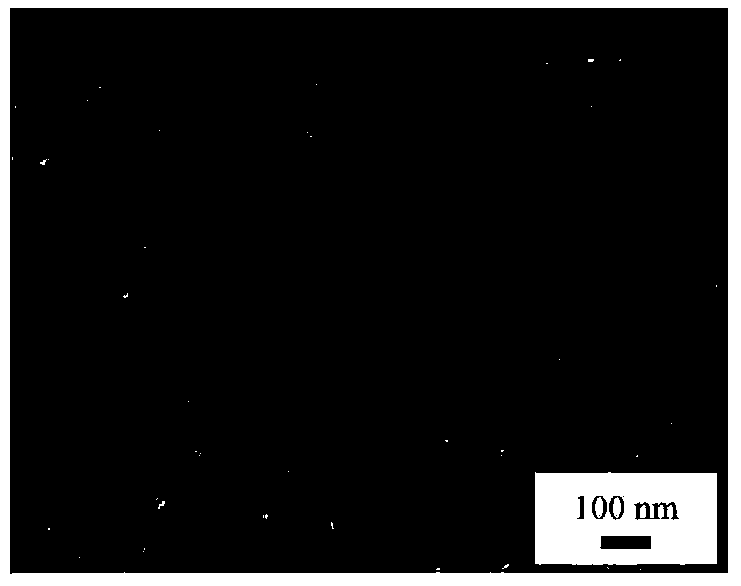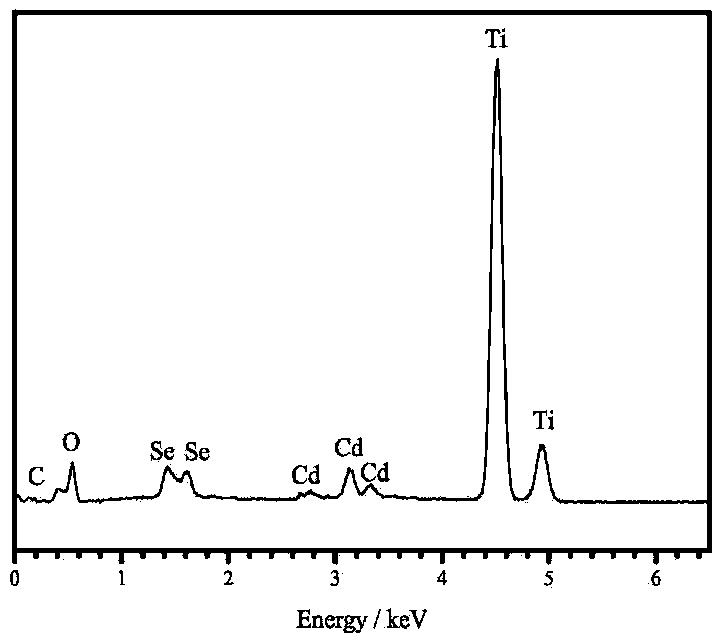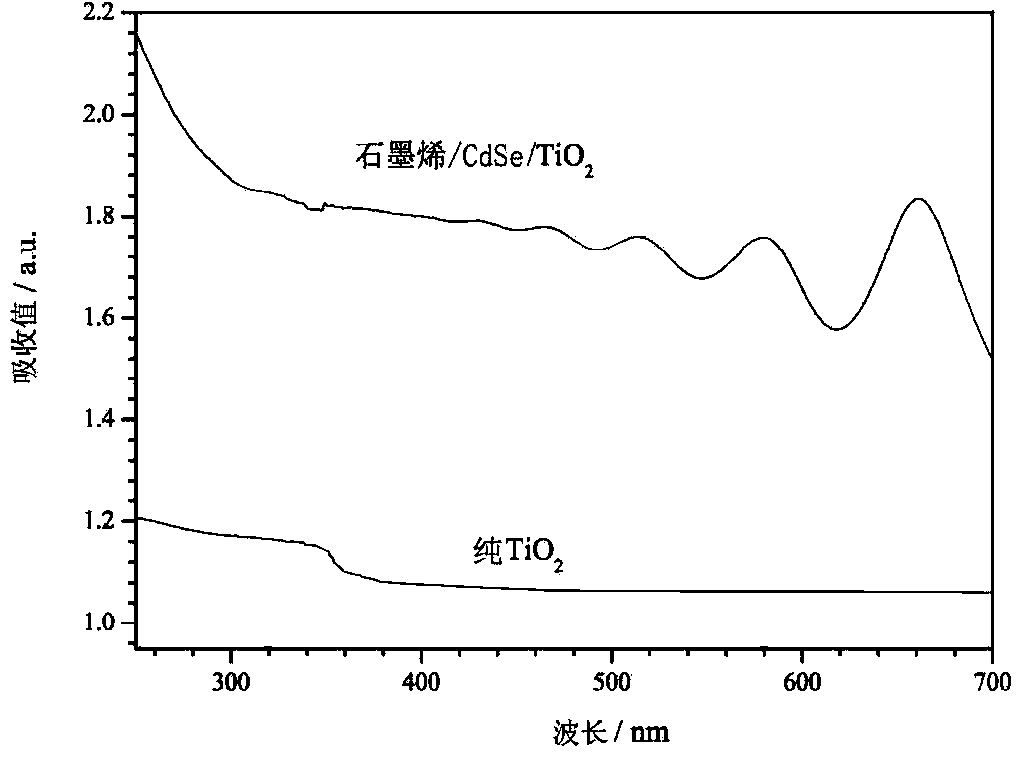A preparing method of a graphene sensitized CdSe/TiO2 nanotube composite membrane
A nanotube composite and graphene technology, applied in nanotechnology, electrolytic inorganic material coating, electrolytic coating, etc., can solve problems such as low photoelectric efficiency, fast recombination of photogenerated electron-hole pairs, and inability to effectively use visible light. Achieve the effect of complete and uniform coating and avoid corrosion
- Summary
- Abstract
- Description
- Claims
- Application Information
AI Technical Summary
Problems solved by technology
Method used
Image
Examples
Embodiment 1
[0042] Take a rectangular pure titanium foil with a thickness of 0.1 mm as a sample, which is 15 mm long and 10 mm wide. The surface of the sample was sequentially polished with 400-1500 grit sandpaper, and then ultrasonically cleaned in acetone, absolute ethanol and deionized water for 10 minutes.
[0043] Measure 1 mL of hydrofluoric acid into 100 mL of deionized water to make a hydrofluoric acid solution. At room temperature, with the cleaned titanium foil substrate as the anode and the platinum sheet as the cathode, anodize at 30V for 30min in the above mixed solution. Then the sample was placed in a muffle furnace and calcined at 450 °C for 2 hours, and then cooled to room temperature with the furnace, that is, TiO was prepared on the surface of the titanium foil substrate. 2 nanotube array film.
[0044] Using cyclic voltammetry deposition method, first on TiO 2 Graphene quantum dots are deposited on the surface of the nanotube array film. 0.1 g of graphite oxide was...
Embodiment 2
[0051] Graphene-sensitized CdSe / TiO 2 Preparation method of nanotube composite film:
[0052] Take a rectangular pure titanium foil with a thickness of 0.1 mm as a sample, which is 15 mm long and 10 mm wide. The surface of the sample was sequentially polished with 400-1500 grit sandpaper, and then ultrasonically cleaned in acetone, absolute ethanol and deionized water for 10 minutes.
[0053] Measure 1 mL of hydrofluoric acid into 100 mL of deionized water to make a hydrofluoric acid solution. At room temperature, with the cleaned titanium foil substrate as the anode and the platinum sheet as the cathode, anodize at 30V for 30min in the above mixed solution. Then the sample was placed in a muffle furnace and calcined at 450 °C for 2 hours, and then cooled to room temperature with the furnace, that is, TiO was prepared on the surface of the titanium foil substrate. 2 nanotube array film.
[0054] Using cyclic voltammetry deposition method, first on TiO 2 Graphene quantum d...
Embodiment 3
[0058] Graphene-sensitized CdSe / TiO 2 Preparation method of nanotube composite film:
[0059] Take a rectangular pure titanium foil with a thickness of 0.1 mm as a sample, which is 15 mm long and 10 mm wide. The surface of the sample was sequentially polished with 400-1500 grit sandpaper, and then ultrasonically cleaned in acetone, absolute ethanol and deionized water for 10 minutes.
[0060] Measure 1 mL of hydrofluoric acid into 100 mL of deionized water to make a hydrofluoric acid solution. At room temperature, with the cleaned titanium foil substrate as the anode and the foil as the cathode, anodize at 30V for 30min in the above mixed solution. Then the sample was placed in a muffle furnace and calcined at 450 °C for 2 hours, and then cooled to room temperature with the furnace, that is, TiO was prepared on the surface of the titanium foil substrate. 2 nanotube array film.
[0061] Using cyclic voltammetry deposition method, first on TiO 2 Graphene quantum dots are de...
PUM
| Property | Measurement | Unit |
|---|---|---|
| thickness | aaaaa | aaaaa |
| length | aaaaa | aaaaa |
| width | aaaaa | aaaaa |
Abstract
Description
Claims
Application Information
 Login to View More
Login to View More - R&D
- Intellectual Property
- Life Sciences
- Materials
- Tech Scout
- Unparalleled Data Quality
- Higher Quality Content
- 60% Fewer Hallucinations
Browse by: Latest US Patents, China's latest patents, Technical Efficacy Thesaurus, Application Domain, Technology Topic, Popular Technical Reports.
© 2025 PatSnap. All rights reserved.Legal|Privacy policy|Modern Slavery Act Transparency Statement|Sitemap|About US| Contact US: help@patsnap.com



